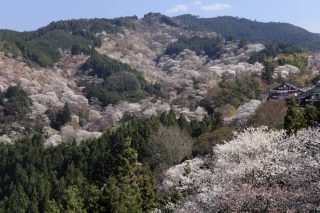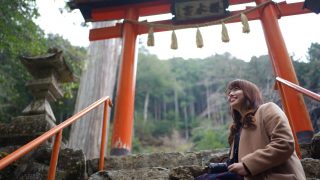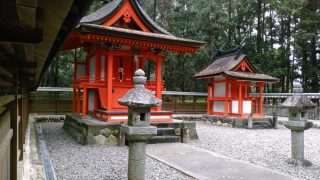2020 will be the 1300th year since the creation of the “Nihon Shoki” (“The Chronicles of Japan,” hereinafter called “Shoki”).
Fans of ancient history are known to gather in Nara, the home of the Shoki, which was compiled in 720 AD and summarizes the history of Japan from the period of mythology to the period of Emperor Jito. 2020 will be the 1300th year since its compilation.
Yoshino-dera Temple (located in the Yoshino region) is the only temple that appears in the “Shoki”. There is not much written in the “Shoki” about the location of Yoshino-dera Temple, but “Seson-ji Temple,” found in the area of Hiso, Oyodo Town, is said to have inherited the hanging lanterns of Yoshino-dera Temple. Seson-ji Temple was revived by Unmon-sokudo, a high priest of the Soto sect (Zen sect) in 1751 during the Edo period.
First of all, let’s start our tour of this fascinating temple from the south gate.
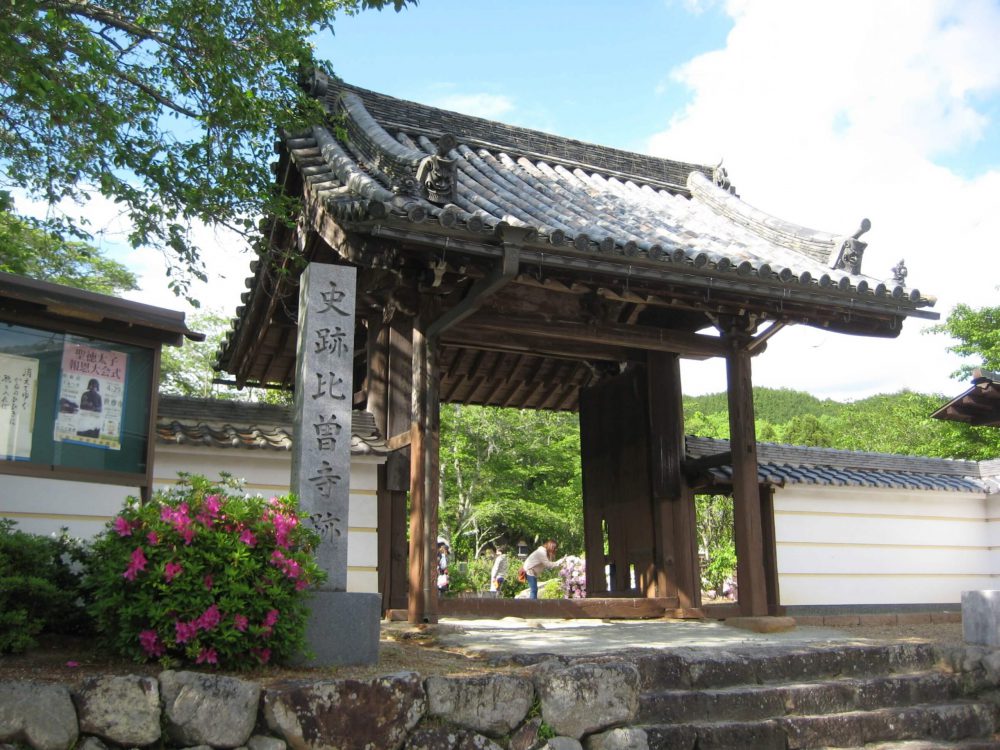
South gate of Seson-ji Temple
At the gate, there is a monkey statue that is said to have been created by the famous craftsman Jingoro Hidari. When you pass the gate and enter into the quiet precincts, you can hear birds chirping. In spring, cherry blossoms are in full bloom and rare illicium religiosum can be found alongside colorful flowers that welcome you to the temple.
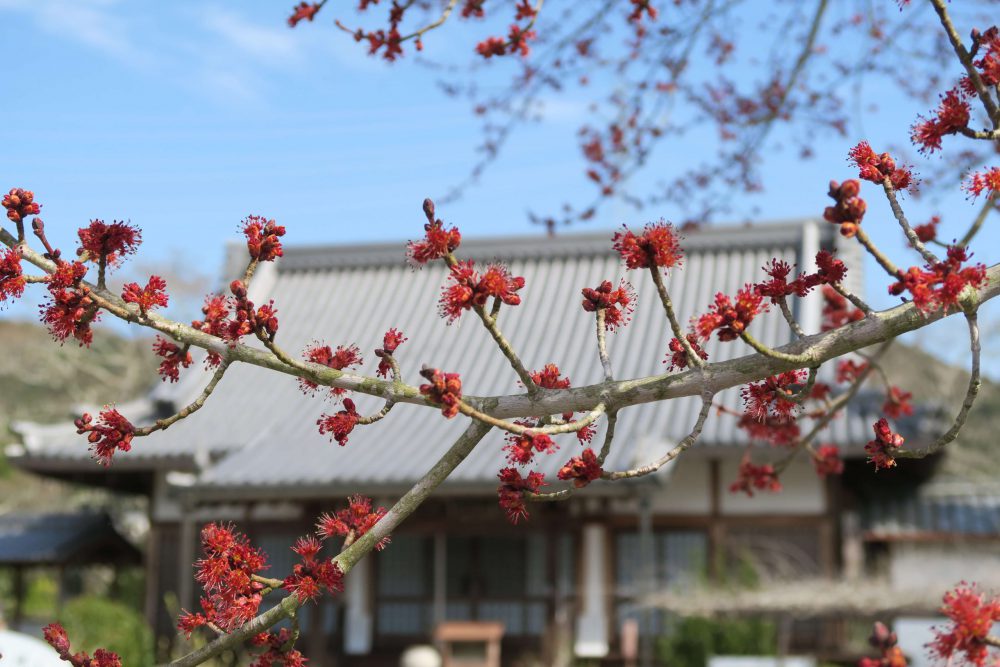
Illicium religiosum
In late May, the scent of alpine plant Magnolia sieboldii permeates the air and in autumn there are red and white spider lilies. On December 31st, the sound of bells at midnight echo throughout the quiet mountains of Hiso.
The Hiso area was actually referred to as “Yoshino” 1,300 years ago, therefore when the temple was constructed it was named “Yoshino-dera Temple. The northern area of Hiso is part of Asuka, the first capital of Japan and a location from which Japanese culture is said to have originated. It’s construction in this vital area demonstrates the importance of Yoshino-dera Temple.
After the Asuka era, Yoshino-dera Temple was renamed “Hiso-dera Temple” after the name of the area and it prospered. It fell into ruin in the Edo period(1603- 1868), but later was revived as Seson-ji Temple.
It’s current fame is attributed to the 3 “oldest” aspects of this temple.
First of all, it is known as the oldest temple in the Yoshino region, with roof tiles buried underneath the current temple grounds that date back to the 7th century.
The second “oldest” aspect is the principal image of Seson-ji Temple. In “Shoki”, it is written that during the 6th century, the Buddha statue in Yoshino-dera Temple was made using a “shining camphor tree” which was found floating in the sea of Chino, near Osaka. That means, the principal image of Seson-ji Temple is the first “Houkoubustu” (“shining Buddha statue”) ever created in Japan. Because the face of the statue appears to be subtly smiling, it was nicknamed the “Smiling Buddha of Yoshinoji.”
You might be thinking “If it’s such an old Buddha statue, shouldn’t it be considered a national treasure or something?” Well a recent research actually revealed that the statue is actually a “revived” Buddha statue made from new cypress wood in 1700 CE.
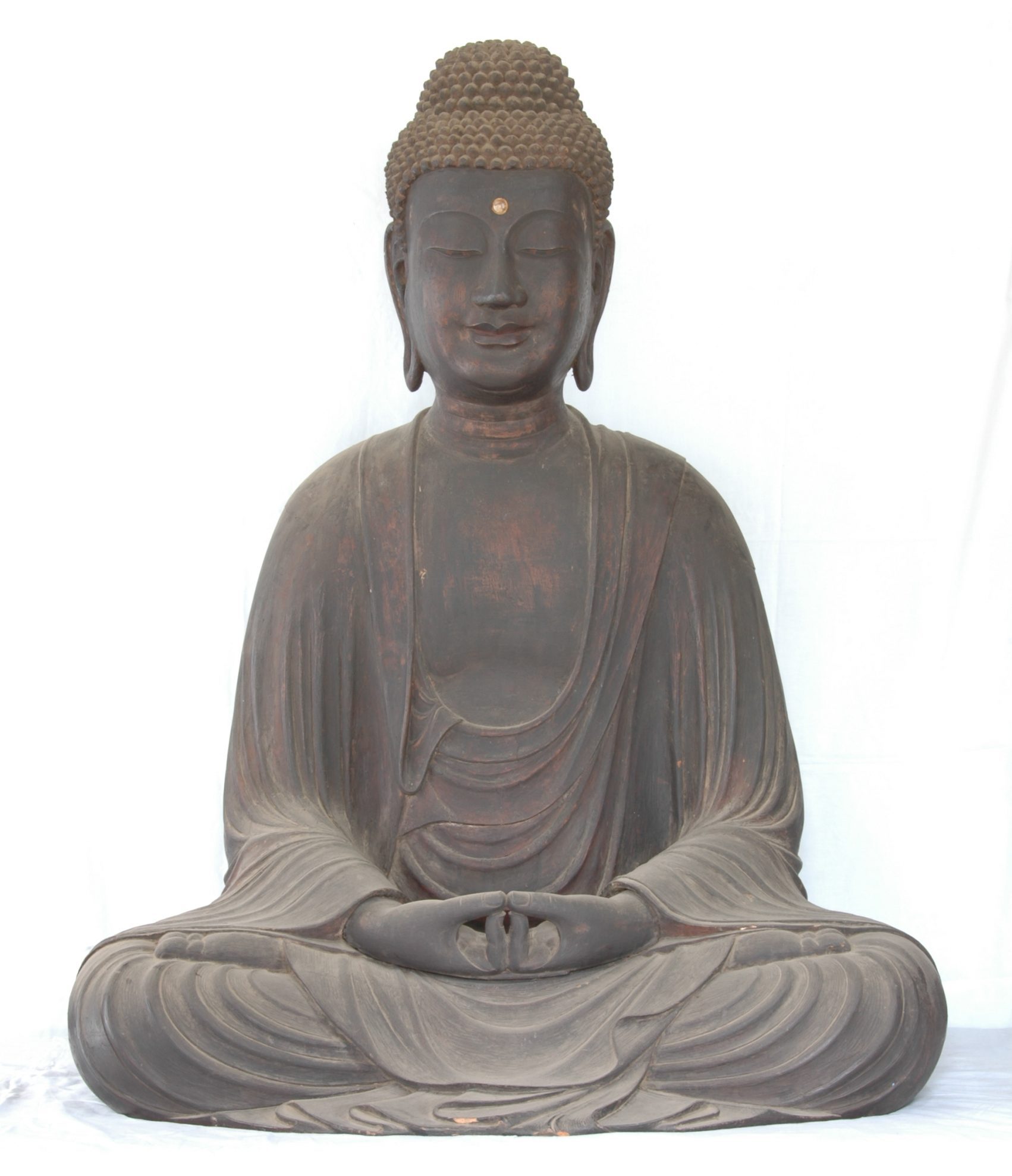
The principal image of Seson-ji Temple (Houkoubustu, seated statue of Amida Nyorai)
However, it was also found that old hardwood was reused in the statue, in the face down to the neck. So a new mystery has emerged in regards to how to date the material used.
The third “oldest” ascept can be found in the tradition of Japan’s oldest fragrant wood.
According to the “Shoki,” during the period of Emperor Suiko, a heavy fragrant wood named “Jinsuiko” floated to Awaji Island.
According to the “Episodes of Prince Shotoku,” Prince Shotoku, who was fascinated by the strange and attractive scent of fragrant wood, carved a 33 cm Kannon out of the fragrant tree and placed it in a temple in Yoshino. This was the first statute of the deity Kannon in Japan.
If the original statue still remained, it would be considered a national treasure, but unfortunately there is no evidence of its existence anymore. According to the temple biography, it is said that the Eleven-faced Kannon statue in the main hall, which is about 2 meters high, is the original Kannon statue. However, it is too large to have been carved out of the fragrant tree. That being said, it still dates back to the Nara period and is the oldest wooden carved Buddha in Yoshino (actually making it the fourth “oldest” aspect!).
There is an anecdote that when the former main hall caught fire in 1937, a brave villager of Hiso carried the Kannon statue on his back from the burning main hall. This statue was repaired in 1662 and 1700, but recently it has been repaired again and revived as a beautiful Buddha.
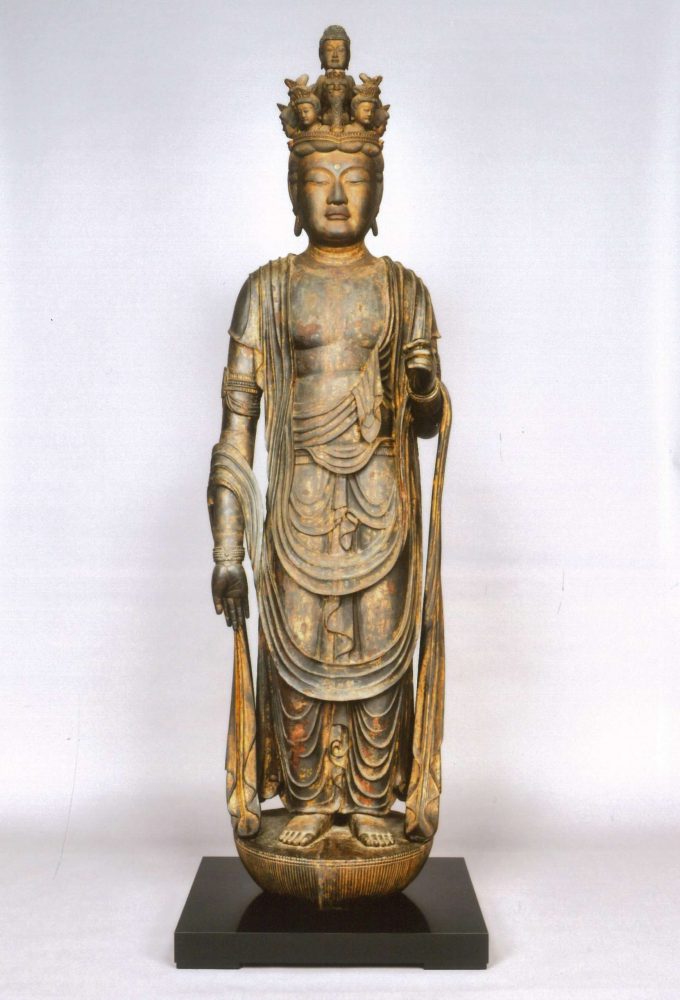
The Eleven-faced Kannon statue (cultural property designated by Nara)
Why don’t you visit this old temple of various traditions and strange scents? Chief priest Motoyama will welcome you with a smile. For a deep dive into Yoshino history, I recommend starting with a greeting from the smiling, beautiful Buddha at the “origin” of Yoshino.
Information of Seson-ji Temple
Address: 〒639-3128 762Hiso, Oyodo-cho, Yoshino-gun, Nara
TEL/FAX: 0746-32-5976
Fee: Entrance 100 yen, Admission 300 yen
Access: About 5 minutes from Kintetsu Yoshino Line “Muda Station” or “Yamato-Kamiichi” station by car/taxi (Parking lot nearby)
Related videos: YouTube “Oyodo Town Official Video Channel”
* From January 15th (Wednesday) to March 8th (Sunday) in 2020, the eleven-sided Kannon was exhibited in the special exhibition “Izumo and Yamato” held at the Tokyo National Museum as a representative of Nara.

